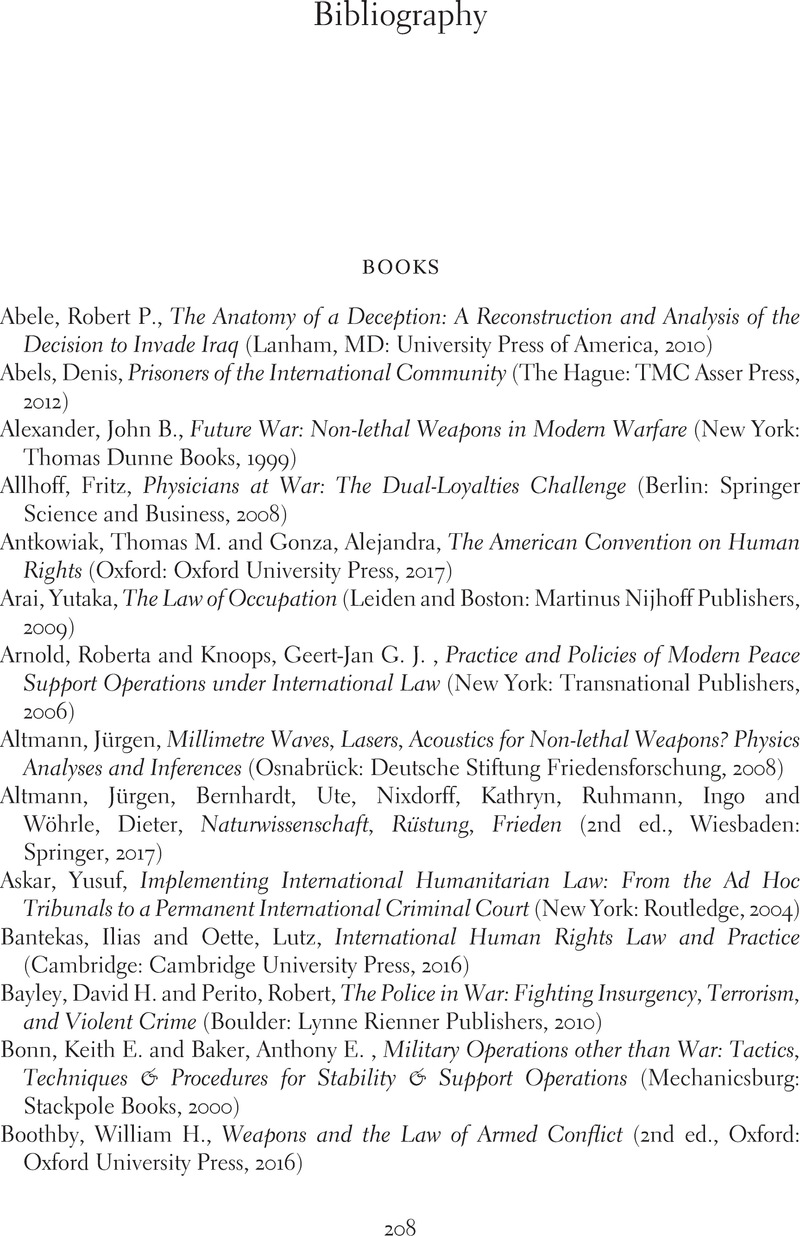Book contents
- Less-Lethal Weapons under International Law
- Less-Lethal Weapons under International Law
- Copyright page
- Dedication
- Contents
- Foreword
- Acknowledgments
- Table of Cases
- Table of Legal Instruments
- Abbreviations
- Introduction
- 1 Definition and Categorization of Less-Lethal Weapons
- 2 Less-Lethal Weapons and International Law
- 3 Guidelines on Less-Lethal Weapons
- Conclusion
- Bibliography
- Index
- References
Bibliography
Published online by Cambridge University Press: 13 August 2021
- Less-Lethal Weapons under International Law
- Less-Lethal Weapons under International Law
- Copyright page
- Dedication
- Contents
- Foreword
- Acknowledgments
- Table of Cases
- Table of Legal Instruments
- Abbreviations
- Introduction
- 1 Definition and Categorization of Less-Lethal Weapons
- 2 Less-Lethal Weapons and International Law
- 3 Guidelines on Less-Lethal Weapons
- Conclusion
- Bibliography
- Index
- References
Summary

- Type
- Chapter
- Information
- Less-Lethal Weapons under International LawA Three-Dimensional Perspective, pp. 208 - 225Publisher: Cambridge University PressPrint publication year: 2021

